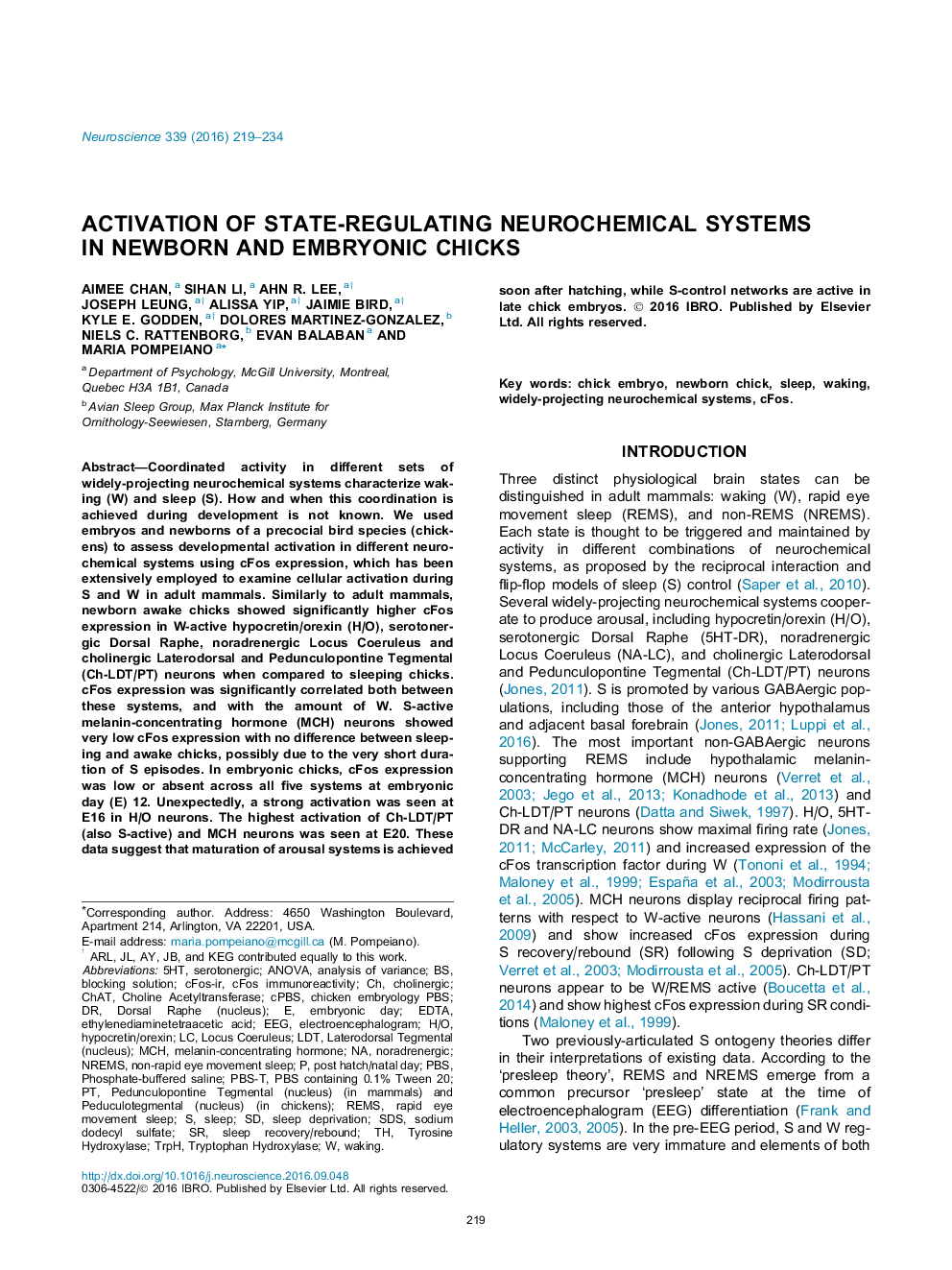| کد مقاله | کد نشریه | سال انتشار | مقاله انگلیسی | نسخه تمام متن |
|---|---|---|---|---|
| 6270699 | 1614737 | 2016 | 16 صفحه PDF | دانلود رایگان |
- Newborn awake chicks show coordinated activation of arousal systems.
- Arousal systems maturate and are able to support waking shortly after hatching.
- One day before hatching, chick embryos show activation of sleep-regulatory systems.
- These data support the presence of a sleep-like state in late-stage chick embryos.
Coordinated activity in different sets of widely-projecting neurochemical systems characterize waking (W) and sleep (S). How and when this coordination is achieved during development is not known. We used embryos and newborns of a precocial bird species (chickens) to assess developmental activation in different neurochemical systems using cFos expression, which has been extensively employed to examine cellular activation during S and W in adult mammals. Similarly to adult mammals, newborn awake chicks showed significantly higher cFos expression in W-active hypocretin/orexin (H/O), serotonergic Dorsal Raphe, noradrenergic Locus Coeruleus and cholinergic Laterodorsal and Pedunculopontine Tegmental (Ch-LDT/PT) neurons when compared to sleeping chicks. cFos expression was significantly correlated both between these systems, and with the amount of W. S-active melanin-concentrating hormone (MCH) neurons showed very low cFos expression with no difference between sleeping and awake chicks, possibly due to the very short duration of S episodes. In embryonic chicks, cFos expression was low or absent across all five systems at embryonic day (E) 12. Unexpectedly, a strong activation was seen at E16 in H/O neurons. The highest activation of Ch-LDT/PT (also S-active) and MCH neurons was seen at E20. These data suggest that maturation of arousal systems is achieved soon after hatching, while S-control networks are active in late chick embryos.
Journal: Neuroscience - Volume 339, 17 December 2016, Pages 219-234
